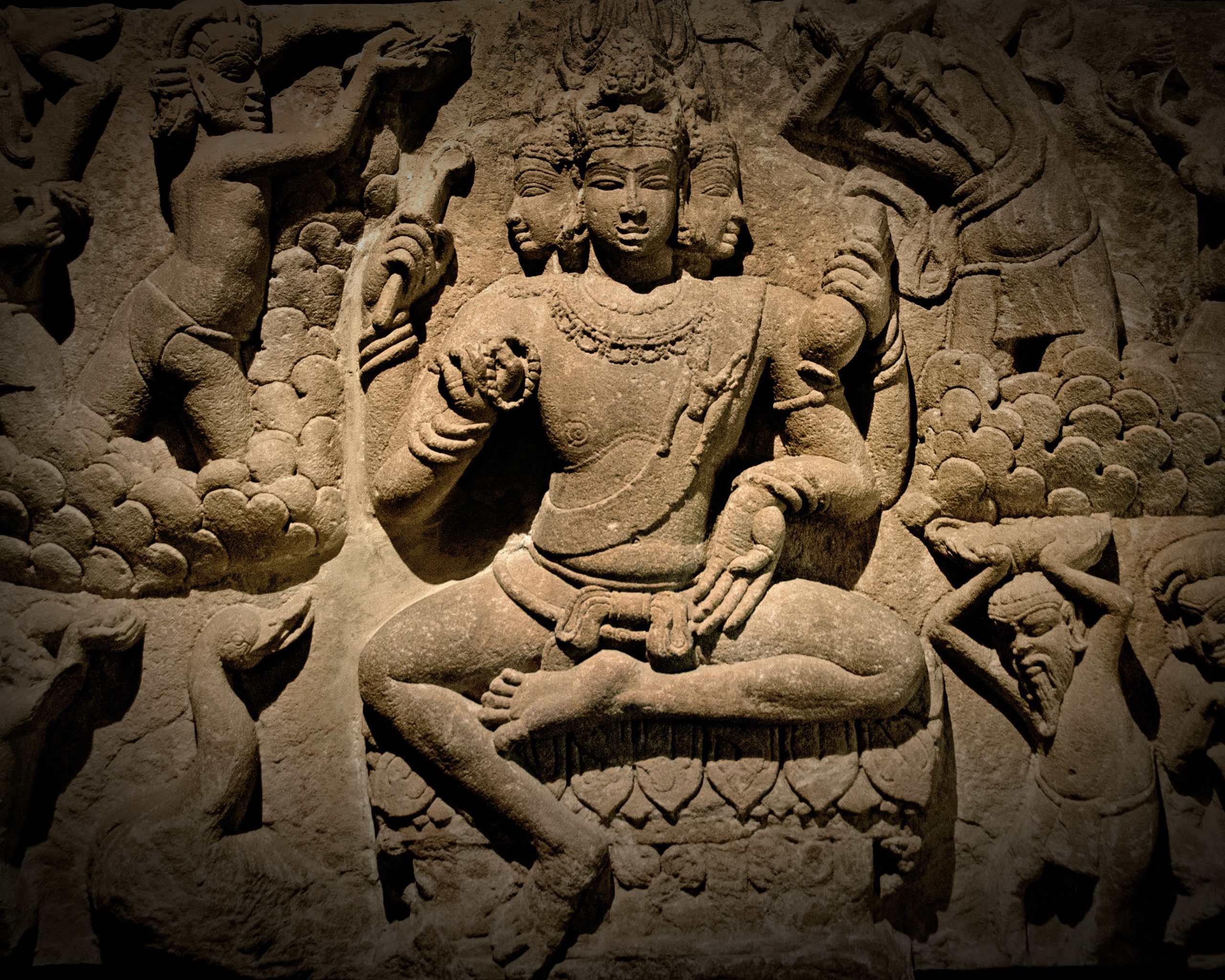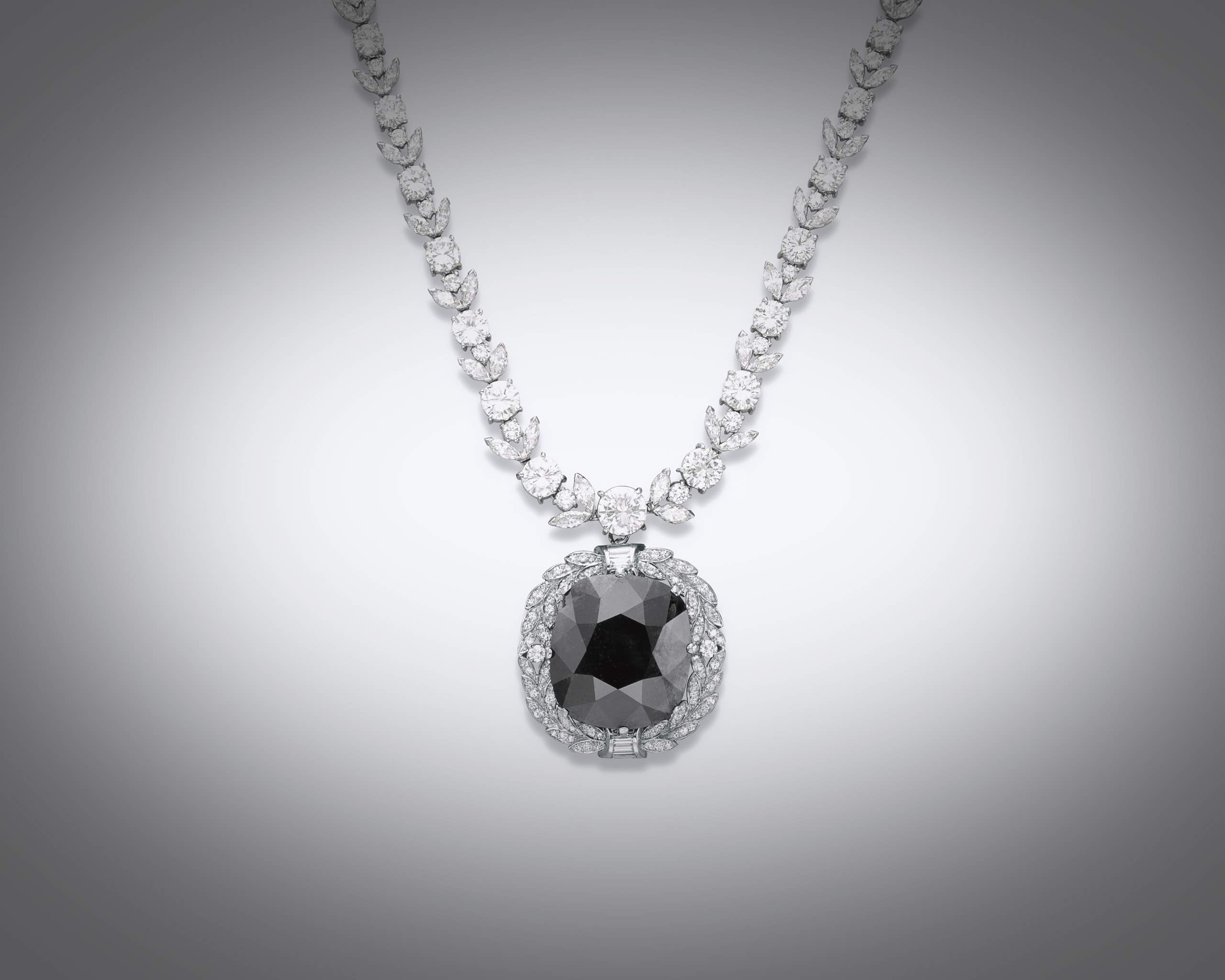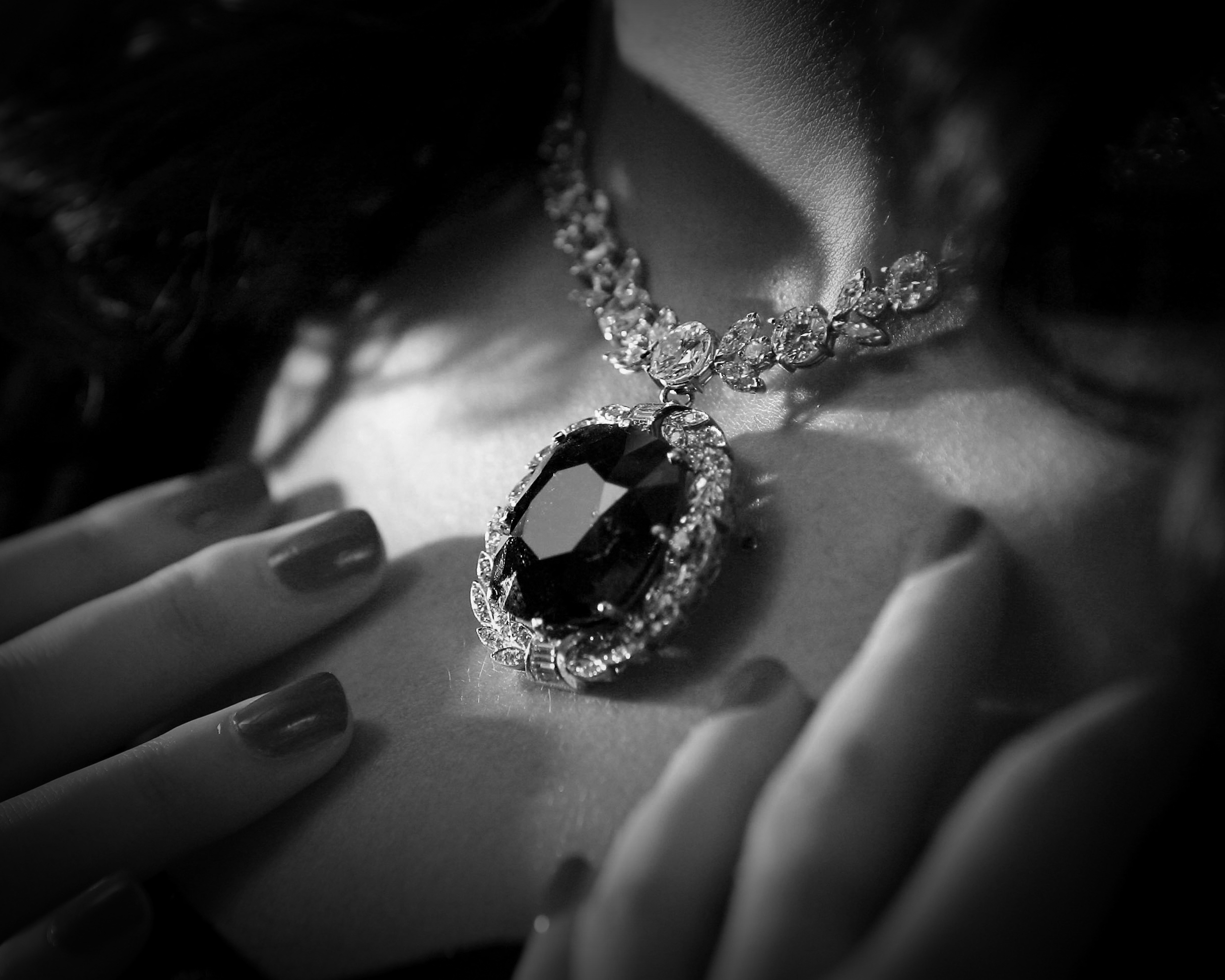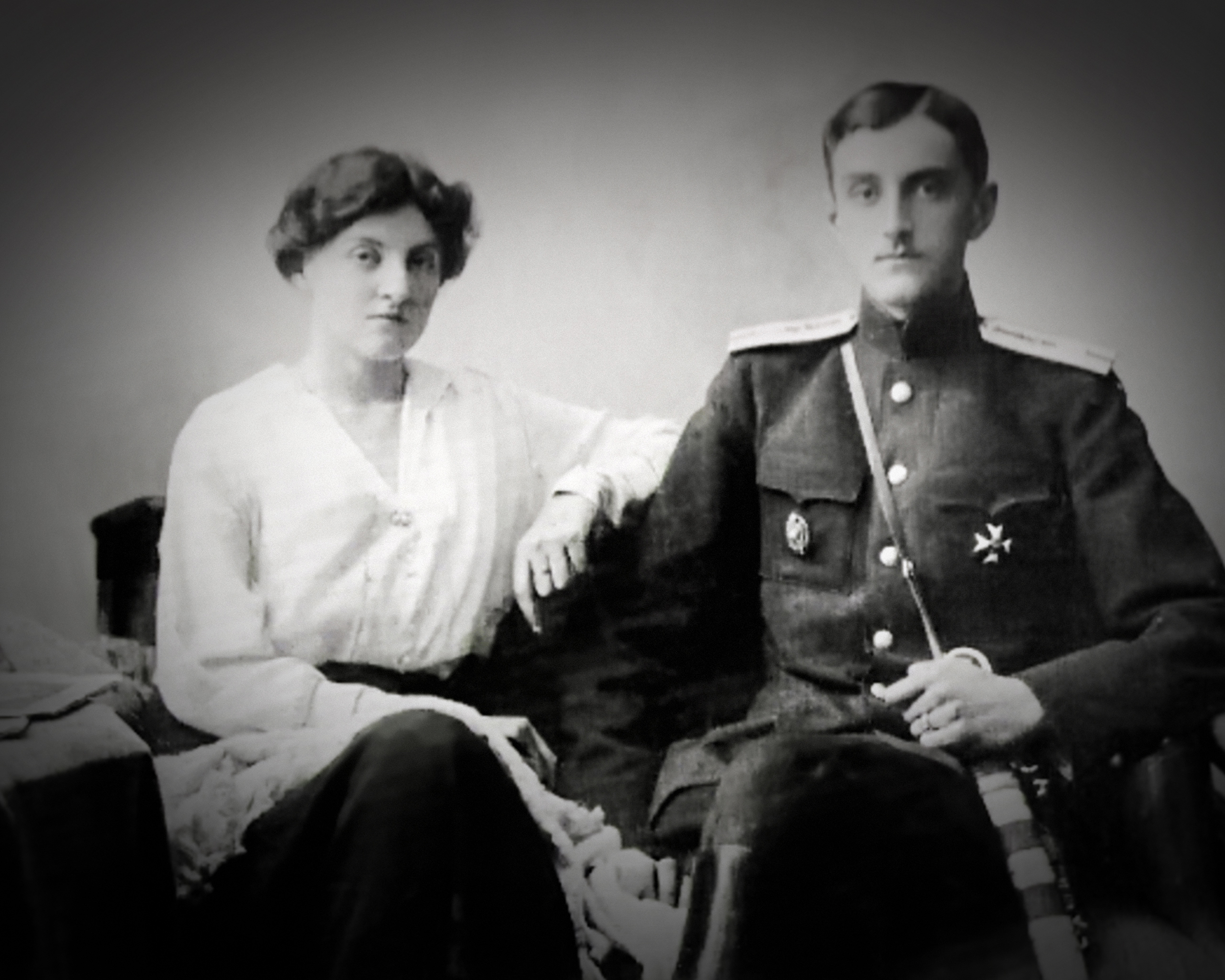The Black Orlov: The Unbelievable Story of the Cursed Diamond
Was the Black Orlov ever cursed? Like most diamond mysteries, the history of the seventh-largest black diamond ever recovered resembles a typical Hollywood thriller: a story full of twists and turns, larger-than-life characters, conspiracies, gray areas, and little white lies. With all its mystique, the legendary gem will never cease to attract and intrigue.
The Black Orlov and a Missed Date at the Oscars
2006, Hollywood. Pan in on Felicity Huffman’s bedroom. The celebrated actress is getting ready for the Academy Awards ceremony. She’s a little nervous, as there’s been a lot of buzz for her performance in Transamerica. Close-up on her neck. Despite recent speculation, she’s not wearing the Black Orlov. After several decades out of public view, the infamous fancy black diamond, the Black Orlov, resurfaced last year at an exhibition in London. A spectacular 67.49-carat natural marvel—set within a diamond-laurel wreath surround and suspended by a 126-diamond necklace—the piece is quite Oscar-worthy. Yet, apparently, the Desperate Housewives star is having a sudden change of heart. Or is it a premonition?
Hollywood again, end of the same day. Reese Witherspoon brings home the coveted golden statuette. Perhaps if Huffman had worn the necklace, her misfortune might have been far worse than losing an award. Although the fancy black diamond is actually closer in color to of gun-metal than black, its reputation is rather dark.
Read More: The Real Story Behind the Diamond Necklace that Helped Inspire Netflix’s ‘Lupin’


An Indian Black Diamond Goes to Russia
Flashback. 19th century, India. A Hindu monk steals a 195-carat black diamond, from the Brahma statue head in Pondicherry. Due to its special placement, the gem was known as the Eye of Brahma. But the Hindu God of Creation is not one you want to mess with, especially when a natural diamond is involved. The official story is that the thieving monk is soon murdered. Though some accounts of history question the monk’s very existence, persistent rumors claim Brahma sends bad tidings to all who come in contact with his precious diamond. “An eye for an eye,” one could say.


The origins of the Black Orlov are likewise murky. Many of the highest authorities in gemology would argue that India is an unlikely place for its story to be born, as it’s not a place known to produce black diamonds. Furthermore, skeptical minds point out that Hindus are not particularly fond of the color black. But fact-checking was tricky back then, and the juicy tale is just too good not to endure. How the black diamond then lands in Russia and is acquired by Princess Nadia Vyegin Orlov is yet another mystery. For starters, there is no trace of such a princess in Russia. Nevertheless, at this time in its history, the diamond, formerly known as the Eye of Brahma, is renamed the Black Orlov.

Responsible for Three Suicides…or None
The Black Orlov is rumored to be responsible for three suicides throughout the first half of the 20th century. The first one involves a European diamond dealer named J. W. Paris, who had brought the pricey diamond to the United States in 1932. Soon after securing the diamond’s sale, he jumps to his death from a Fifth Avenue skyscraper. Just one small inconvenient fact, however. Though this is certainly the running story, there is no official record of this happening.
Fifteen years later, two Russian princesses—both former owners of the Black Orlov—coincidentally follow Paris’s path into the diamond’s infamous curse. The two royals had fled Russia to live in Europe, and both are said to have jumped to their death in 1947. But, as with the others, even their identities are somewhat dubious. The name of the first Princess was Leonila Galitsine-Bariatinsky. But the only woman under that name in Europe had already died in 1918, in Switzerland, at the age of 102. As for the second princess, her name was also Orlov. And it’s true that a Princess Nadezhda Petrovna Orlov actually did live in Europe at the time. Yet, she would have been in her late eighties — which is a remarkable age for a woman to commit suicide over a heartache, as it was, allegedly, attributed. All in all, the story of the Black Orlov just doesn’t add up.


A Fiction Worthy of a TV Series
Made-up stories, superstitions, and publicity-stunts. For a black diamond of such brilliance, only the darkest fictions would do. But there’s one story that has impacted the diamond in the most dramatic way. Charles Wilson purchased the gem in the 1950s, and he chose to break its malediction by cutting the diamond in three pieces. We know the current cushion-shape diamond, but the whereabouts of the two remaining diamonds are yet another enigma.
Thankfully, or maybe suspiciously, no violent death has been attached to the Black Orlov since the princesses. In fact, Dennis Petimezas, who owned the diamond from 2004 until 2006, has stated that he had “never felt nervous about owning the Black Orlov.” And that is probably the truth.
The bizarre story of this black diamond beauty is easily imagined as a mystery TV series in which a binge-watching audience would be kept wondering about its fate, up until the very last minute. One thing’s for sure, if Hollywood does ever produce the Black Orlov story, it would only be fair to cast Felicity Huffman. Unknowingly, the actress brought luck to the cursed jewel. Previously estimated to be worth between $100,000 and $200,000, the diamond promptly sold for $352,000 at Christie’s Magnificent Jewels auction just months after she changed her mind, and perhaps her own fate, forever.
